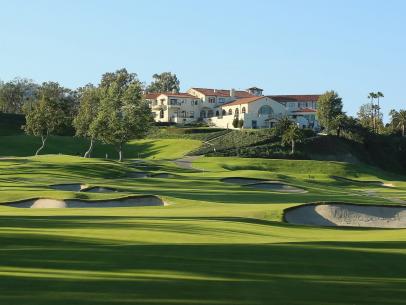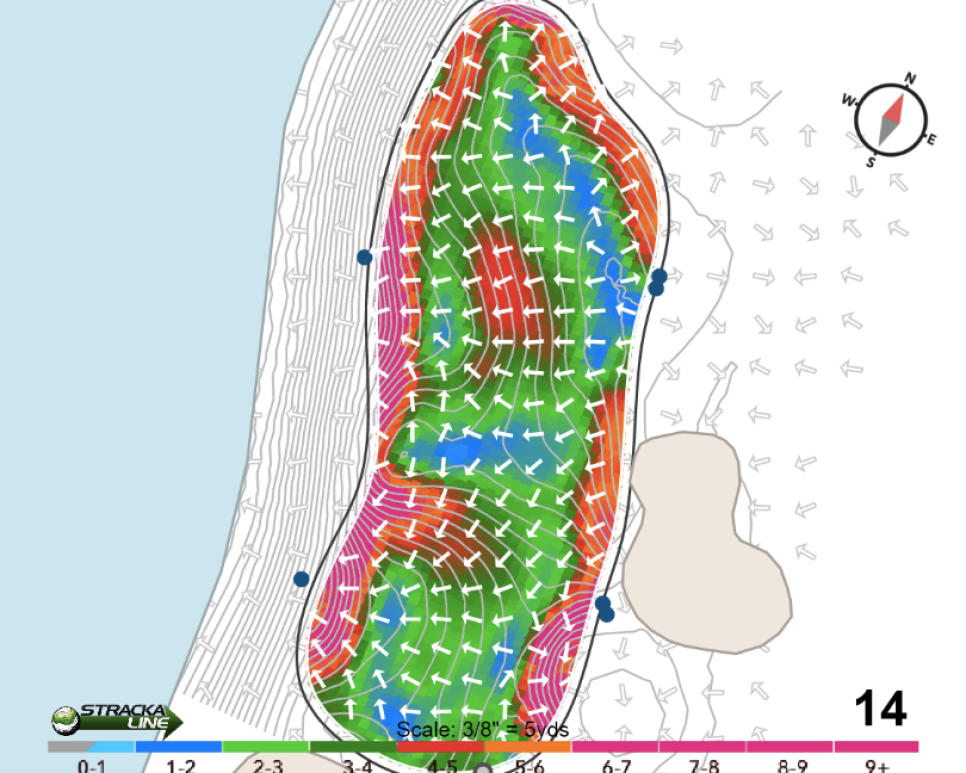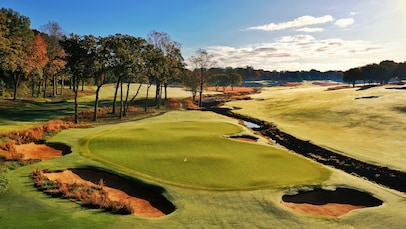Why Quail Hollow’s 14th hole stands out amongst other drivable par 4s on the PGA Tour – Australian Golf Digest

- by Admin
- May 7, 2024

Quail Hollow Club opened in the early 1960s and was very much a product of its times. The George Cobb design was built across rolling, open pasture south of Charlotte just as the city was expanding into suburbs, as most cities were. The holes were long and full of strong doglegs that played into large greens protected by two, three or even four bunkers.
By the 1990s, with trees matured, greens shrunken and bunkers redesigned, the course was very different. That’s when Quail Hollow began working with Tom Fazio, who embarked on a significant remodel program that turned the course into the current version made popular through the broadcast of the Wells Fargo Championship, played there for the first time in 2003. One of the more impactful changes he made was to the lakeside 14th, a hole that has quietly become one of the most exciting short par 4s on tour.
More from Golf Digest 2024 season Golf Digest Logo Our new ranking of every PGA Tour course—from best to worst
Here’s why Quail Hollow’s 14th hole made our ranking of the most underrated holes on tour:
THE HOLE
Quail Hollow’s 14th has always been a short par 4 around 350 yards in length, though during the Wells Fargo the tees are adjusted some days all the way down to 301 yards (during one round of the 2017 PGA Championship they were set at 289 yards).
The hole begins in the trees and plays slightly downhill to a fairway sloped right-to-left toward a lake that starts to come into play 225 yards from the tee, then bends left, hugging the water. Two bunkers sit on the high side of the fairway and catch tee shots aimed too far away from trouble. Two split bunkers guard the front left and right side of a narrow green that’s 50 yards deep and pushed flush against the lake.
RELATED: Tiger Woods explains his strategy for playing the par-4 14th hole at Quail Hollow
A CLOSER LOOK AT THE GREEN 
In 1997, Fazio moved the green down to the water’s edge from where it was previously, 25 yards to the right and 15 yards up on the hillside. This made the hole much more strategically engaging. Previously, players could drive up as close to the green as possible with little fear, and big hitters could occasionally reach the bunkers in front of the putting surface.
RELATED: Quail Hollow to host 2025 PGA Championship
Now if they want to attempt to drive the green they have to assess the risk of finding the water or the right-hand bunker, which leaves a precarious sand shot down the hill to a shallow green running away with the hazard lurking long. Anything creeping off the left edge of the green is gone, taking the plunge. Even lay-ups have added challenge as second shots must play slightly across the axis of the green toward the water, and drives that miss the fairway in the rough or bunkers result in difficult-to-control approaches to a firm green.
STATS
Drivable par 4s used to be those between 275 and 300 yards, often with contours that helped balls bounce onto greens if played correctly. On the PGA Tour, that paradigm is extended nearly 100 yards, though when the tees are set at 340 yards and longer, with hazards lurking, the hole is long enough to create indecision for many. Since 2015, including the 2017 PGA Championship, 56 percent of the field have attempted to go for the green, though only 11 percent (169 drives) have found the putting surface. Watching where balls land and where they drift off to is one of the most entertaining sights on the course.
The pin position is equally critical. When the flag is placed on the front of the green, this is a birdie hole whether played with a driver or for position to set up a short wedge approach, as slopes help move the ball toward the hole. When the flag is all the way back almost no one challenges it, but that leaves long putts that, in some cases, must crest over a ridge and fight the strong right-to-left pull of gravity. When the hole is back, there will be three-putts.
(Green-reading map: Courtesy of StrackaLine)
For more information on StrackaLine’s green-reading books (and a 25 percent discount for our readers), click here.
More from Golf Digest  Best in State The best golf courses in North Carolina
Best in State The best golf courses in North Carolina
This article was originally published on golfdigest.com
The Latest News
-
December 23, 2024Wimbledon champion accepts ban for anti-doping breach just months after winning US Open
-
December 23, 2024Australian tennis star Purcell takes voluntary suspension over anti-doping breach
-
December 23, 2024Max Purcell to miss Australian Open after accepting ban for anti-doping breach
-
December 23, 2024Australian tennis star Purcell provisionally suspended for doping
-
December 23, 2024Star batter misses optional Aussie session; MCG curator rejects anti-India ‘conspiracy’ — Test Daily





